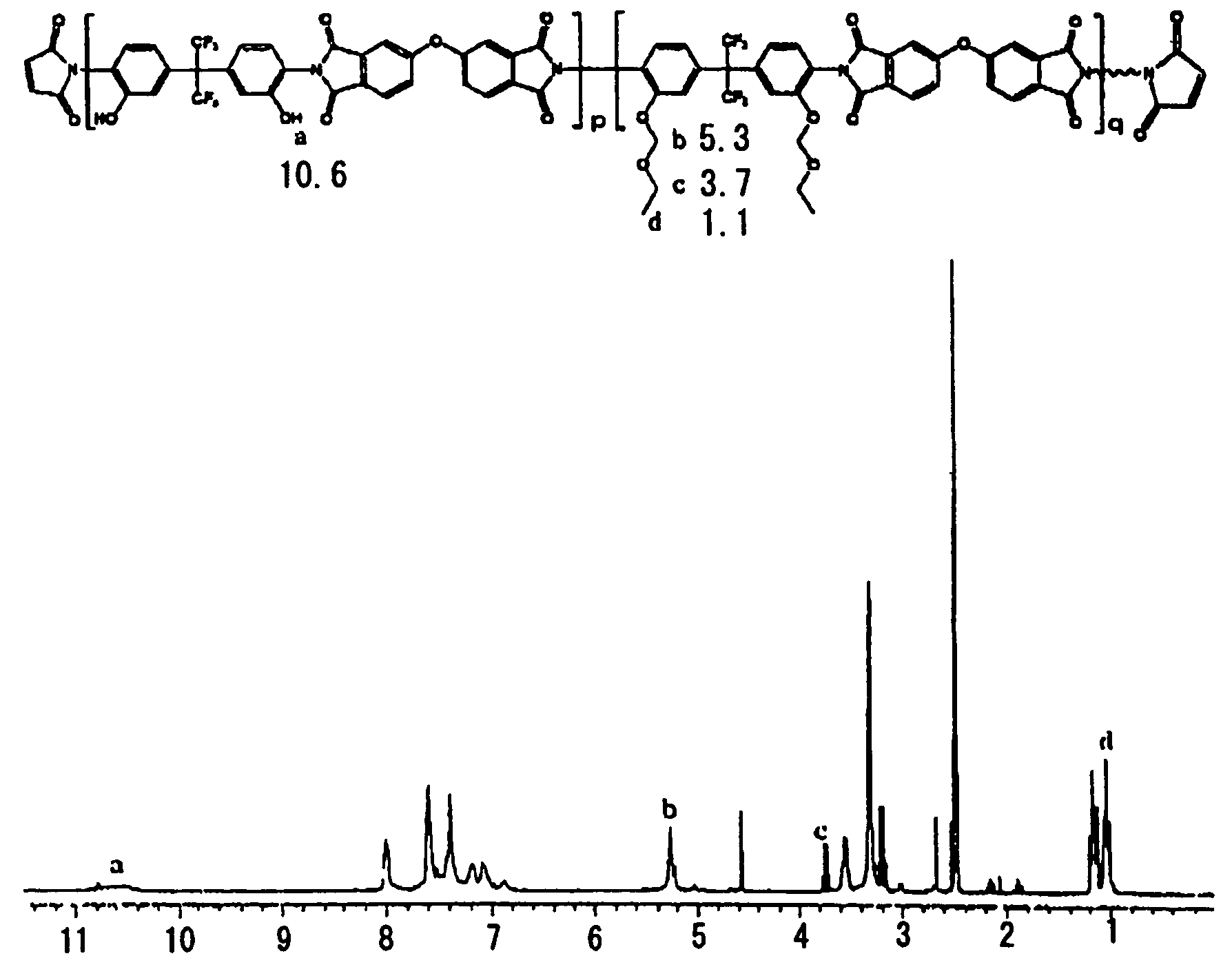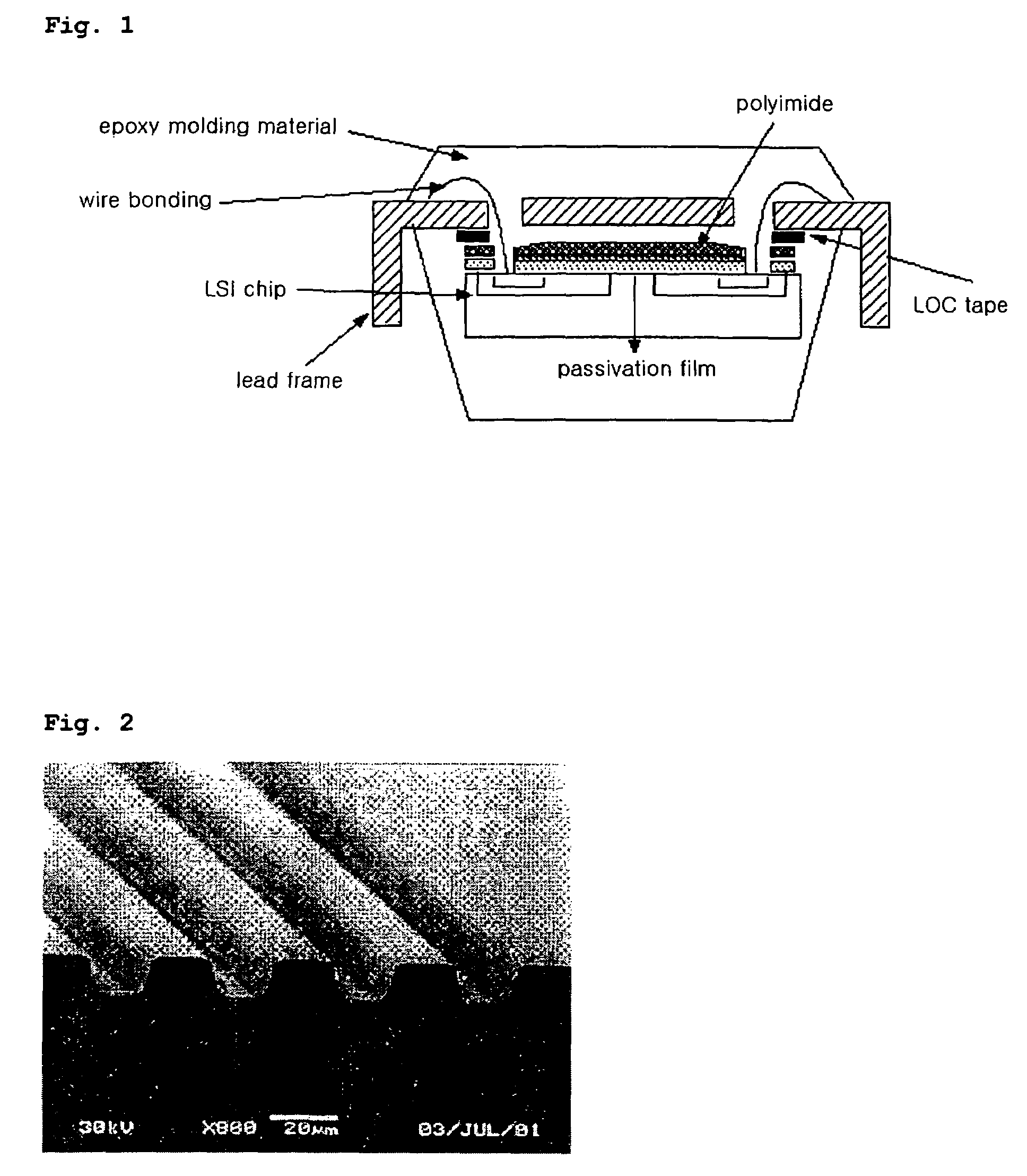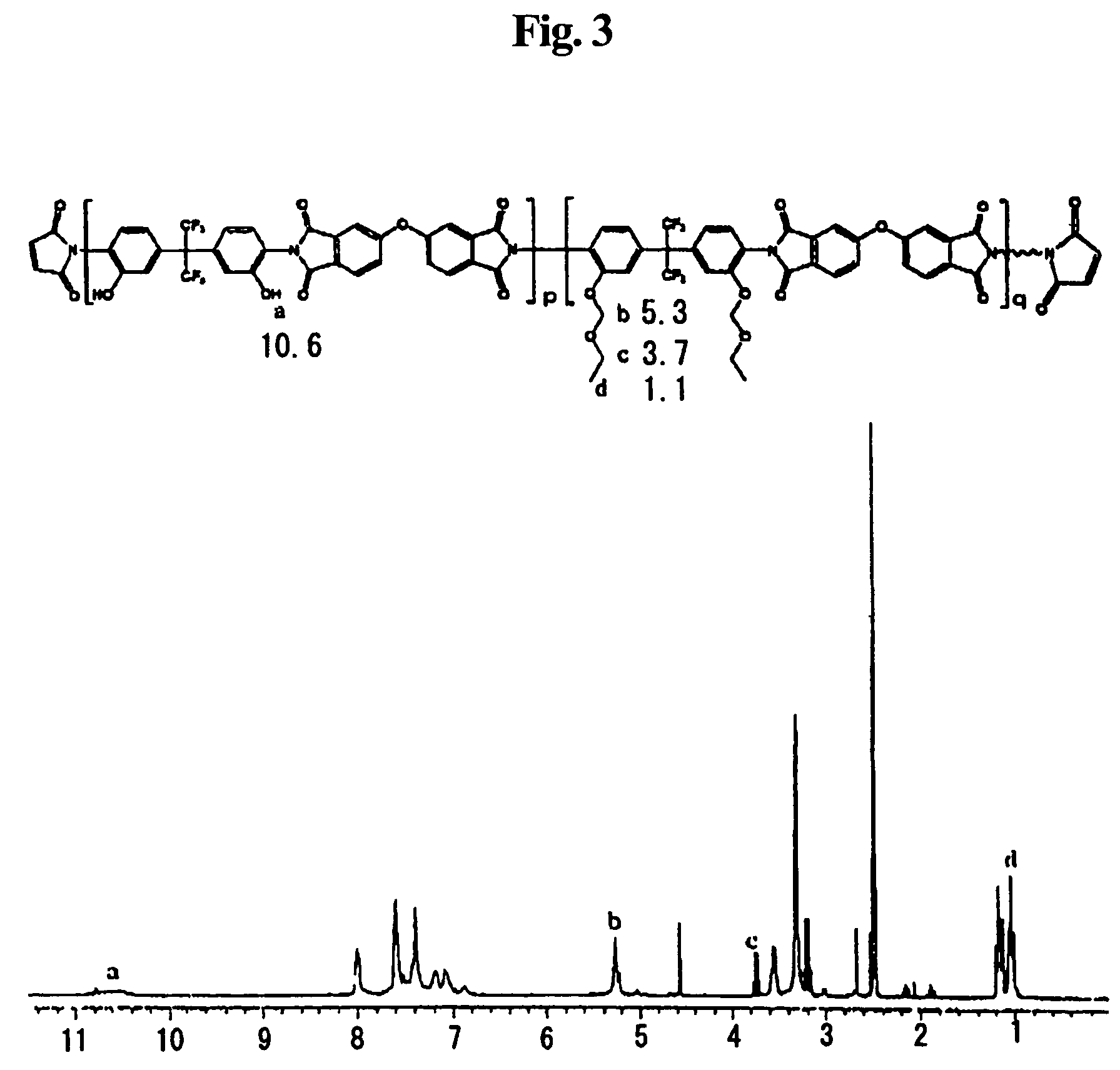Soluble polyimide for photosensitive polyimide precursor and photosensitive polyimide precursor composition comprising the soluble polyimide
- Summary
- Abstract
- Description
- Claims
- Application Information
AI Technical Summary
Benefits of technology
Problems solved by technology
Method used
Image
Examples
example 1
Synthesis of Soluble Polyimide Resin
[0137]2,2-bis(3-amino-4-hydroxyphenyl)hexafluoropropane (36.63 g ) and 200 g of N-methyl-2-pyrrolidone (NMP) were sequentially charged into a 1 L round-bottom flask. The mixture was stirred until it was completely dissolved. While maintaining the flask at 0-5° C., 39.98 g of 2,2-bis(3,4-benzenedicarboxylic anhydride) perfluoropropane and 3.28 g of 5-norbornene-2,3-dicarboxylic anhydride (NDA) were added to the mixture. After the resulting mixture was stirred at room temperature for 16 hours, 40 g of toluene was added to the flask. Using a Dean-Stark distillation equipment, the reaction solution was refluxed at 170° C. for 3 hours to complete the reaction. The reaction solution thus prepared was allowed to cool to room temperature, and slowly poured into a 1:4 methanol-water mixture to obtain precipitates. The precipitates were filtered and dried in a vacuum drying oven at 40° C. for 24 hours to obtain 80 g of a soluble polyimide resin. Resin (20 g...
example 2
[0149]Synthesis of Soluble Polyimide Resin:
[0150]2,2-bis(3-amino-4-hydroxyphenyl)hexafluoropropane (25.64 g) and 150 g of N-methyl-2-pyrrolidone (NMP) were sequentially charged into a 1 L round-bottom flask. The mixture was stirred until it was completely dissolved. While maintaining the flask at room temperature, 19.54 g of ODPA (4,4′-osydiphthalic anhydride) was added slowly. After the resulting mixture was stirred at room temperature for 2 hours, 1.37 g of maleic anhydride was added to the flask. After the resulting mixture was stirred at room temperature for 16 hours, 30 g of toluene was added to the flask. Using a Dean-Stark distillation equipment, the reaction solution was refluxed at 170° C. for 3 hours to complete the reaction. The reaction solution thus prepared was allowed to cool to room temperature, and slowly poured into a 1:4 methanol-water mixture to obtain precipitates. The precipitates were filtered and dried in a vacuum drying oven at 40° C. for one day to obtain 4...
example 3
[0163]Synthesis of Soluble Polyimide Resin:
[0164]3,3′-diamino-4,4′-dihydroxybiphenyl (13.0 g) and 74.2 g of NMP were sequentially charged into a 1 L round-bottom flask. The mixture was stirred until it was completely dissolved. While maintaining the flask at room temperature, 14.9 g of ODPA was added slowly. After the resulting mixture was stirred at room temperature for 2 hours, 3.9 g of NDA was added to the flask. After the resulting mixture was stirred at room temperature for 16 hours, 16 g of toluene was added to the flask. Using a Dean-Stark distillation equipment, the reaction solution was refluxed at 140° C. for 3 hours to complete the reaction. The reaction solution thus prepared was allowed to cool to room temperature, and slowly poured into a 1:4 methanol-water mixture to obtain precipitates. The precipitates were filtered and dried in a vacuum drying oven at 40° C. for one day. 19.6 g of the soluble polyimide resin thus obtained in a powder form was charged into a 1 L rou...
PUM
| Property | Measurement | Unit |
|---|---|---|
| Fraction | aaaaa | aaaaa |
| Percent by mass | aaaaa | aaaaa |
| Percent by mass | aaaaa | aaaaa |
Abstract
Description
Claims
Application Information
 Login to View More
Login to View More - R&D
- Intellectual Property
- Life Sciences
- Materials
- Tech Scout
- Unparalleled Data Quality
- Higher Quality Content
- 60% Fewer Hallucinations
Browse by: Latest US Patents, China's latest patents, Technical Efficacy Thesaurus, Application Domain, Technology Topic, Popular Technical Reports.
© 2025 PatSnap. All rights reserved.Legal|Privacy policy|Modern Slavery Act Transparency Statement|Sitemap|About US| Contact US: help@patsnap.com



